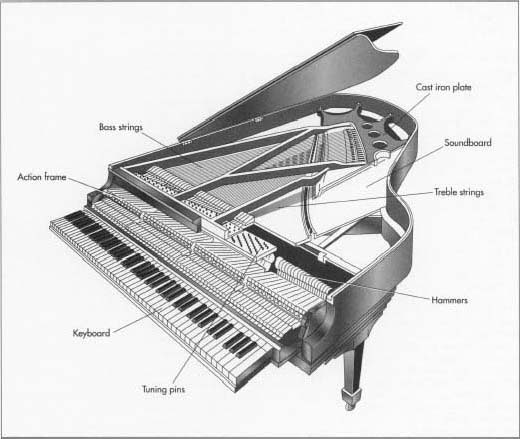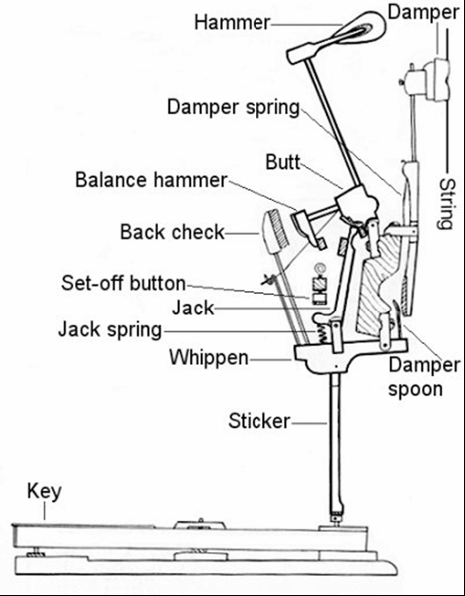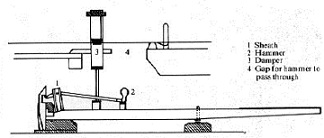Know Your Piano Structure

An acoustic piano usually has a protective wooden case surrounding the sound board and metal strings, and a row of 88 black and white keys (52 white keys for the notes of the C Major scale and 36 shorter black keys, which are higher than the white keys, for the "accidental" notes, which are the sharp and flat notes needed to play in all 12 keys).
The strings are sounded when the keys are pressed or struck, and silenced by a damper when the keys are released.
The notes can be sustained, even when the keys are released, by the use of pedals at the base of the instrument. Unlike two of the major keyboard instruments that preceded the piano, the pipe organ and the harpsichord, the weight or force with which a performer presses or strikes the keys changes the dynamics and tone of the instrument.

Upright Piano Action
Pressing one or more keys on the piano's keyboard causes a padded hammer (often padded with firm felt) to strike the strings. The hammer rebounds from the strings, and the strings continue to vibrate at their resonant frequency.
These vibrations are transmitted through a bridge to a soundboard that amplifies by more efficiently coupling the acoustic energy to the air.
When the key is released, a damper stops the strings' vibration, ending the sound.
Hammers on Grand Pianos have the benefit of gravity while those of an Upright, being placed ''vertically'' (they actually rest at an angle initially), have to go through a swinging motion that makes them counter gravity at first (with a minimal decrease of energy), strike the strings (with a minimal increase of energy) and then go back with that same motion. As a consequence, performing on a Grand Piano allows greater velocity and faster repetition.

Grand Piano Action